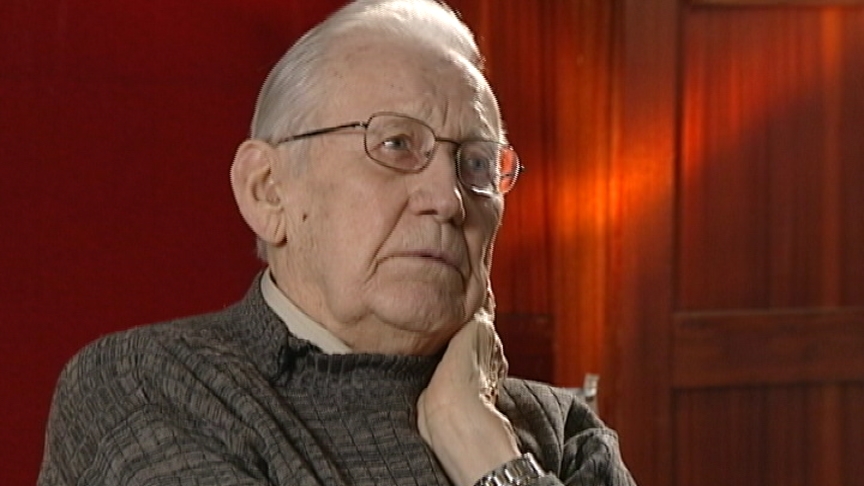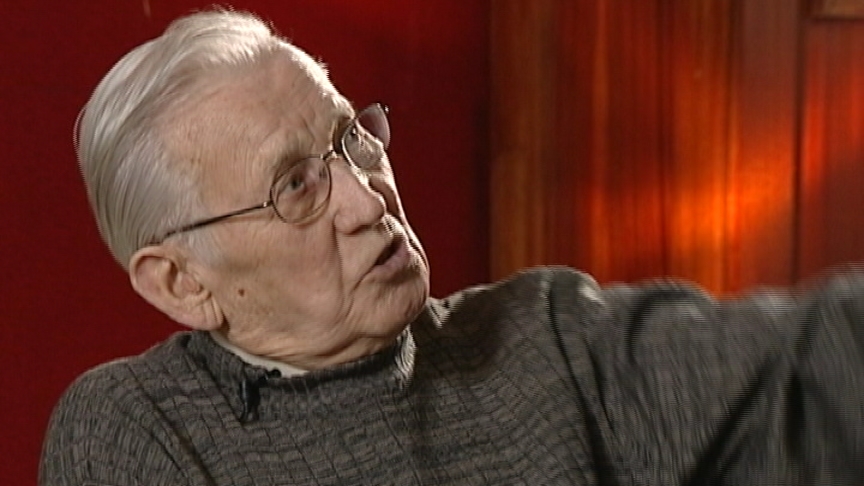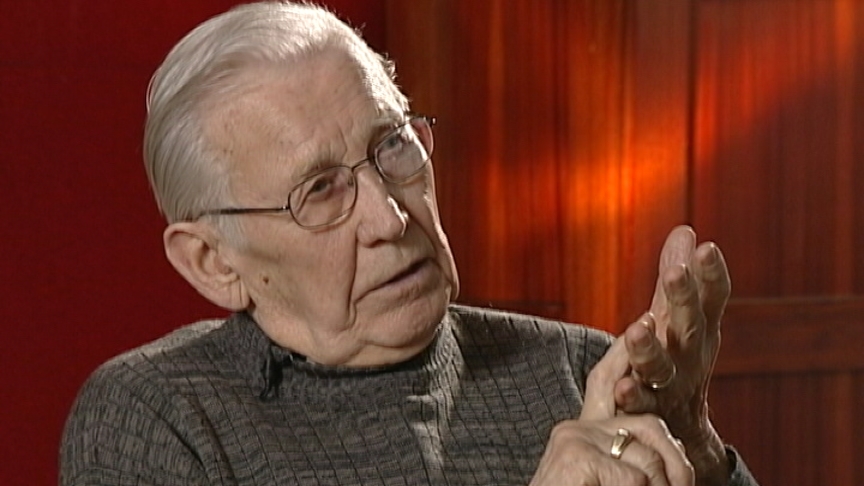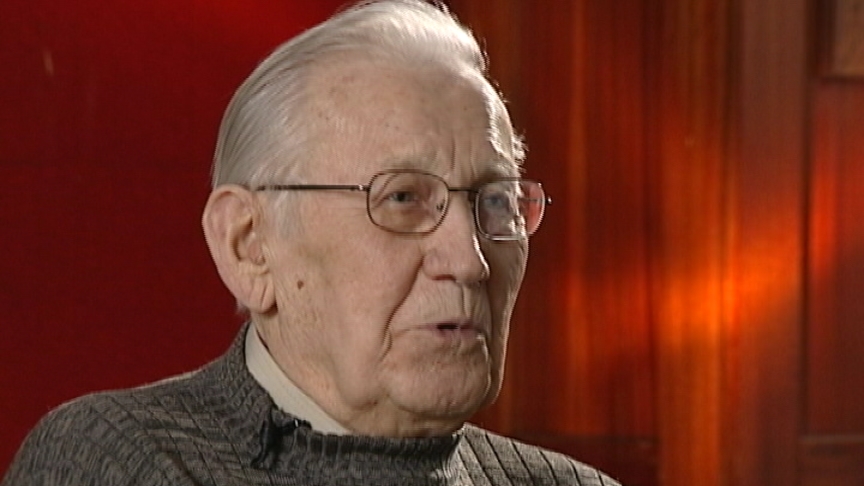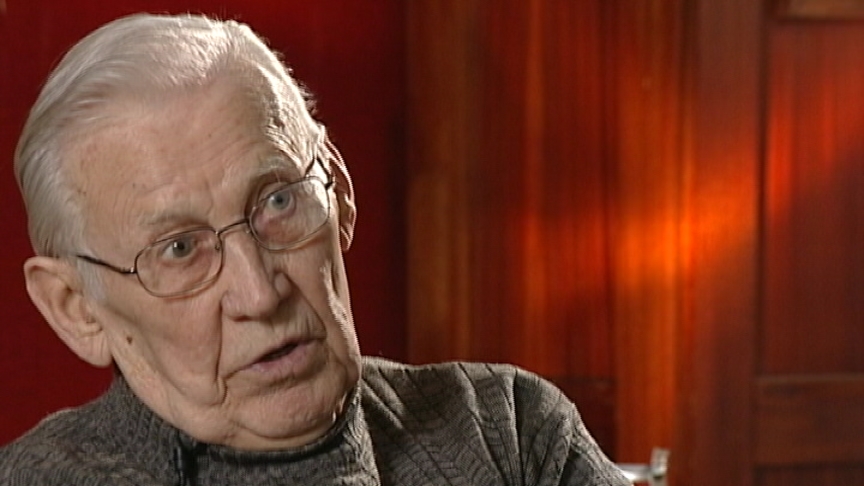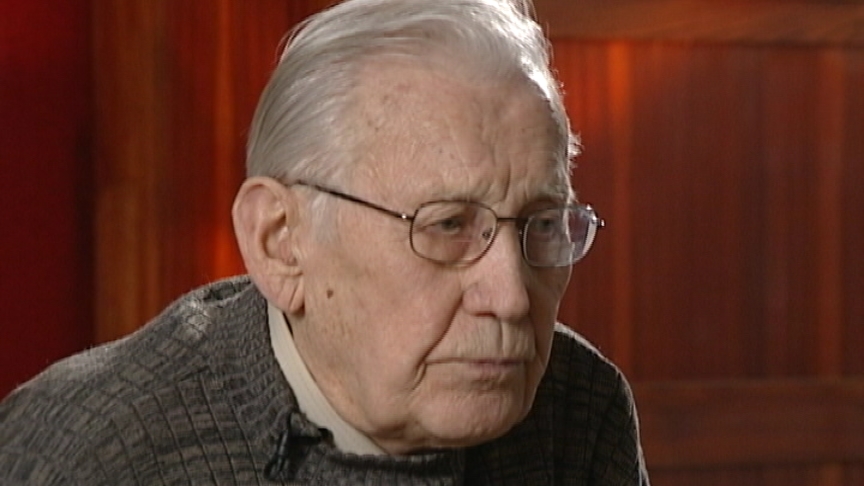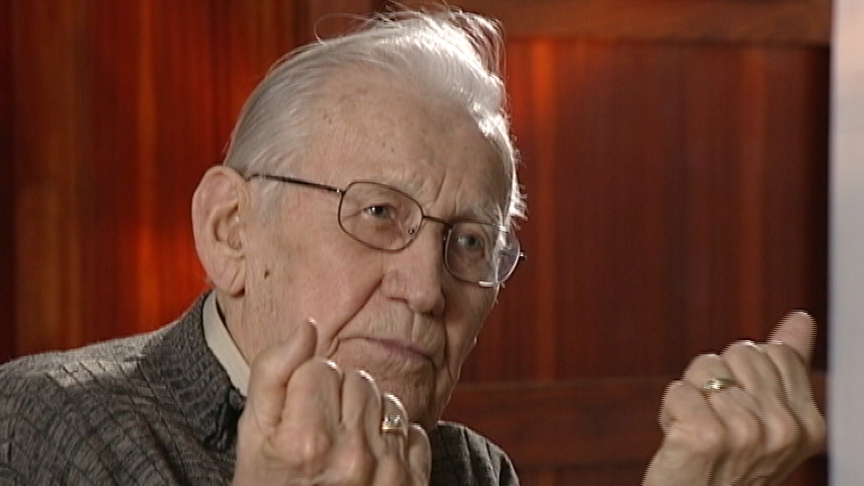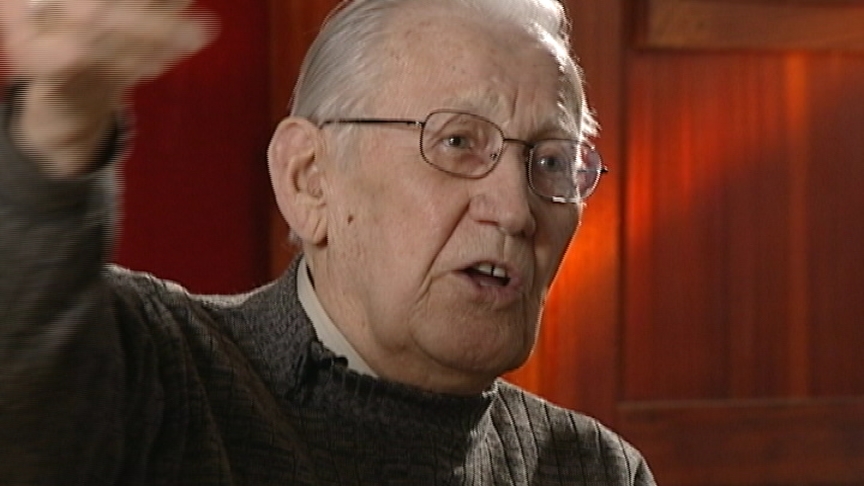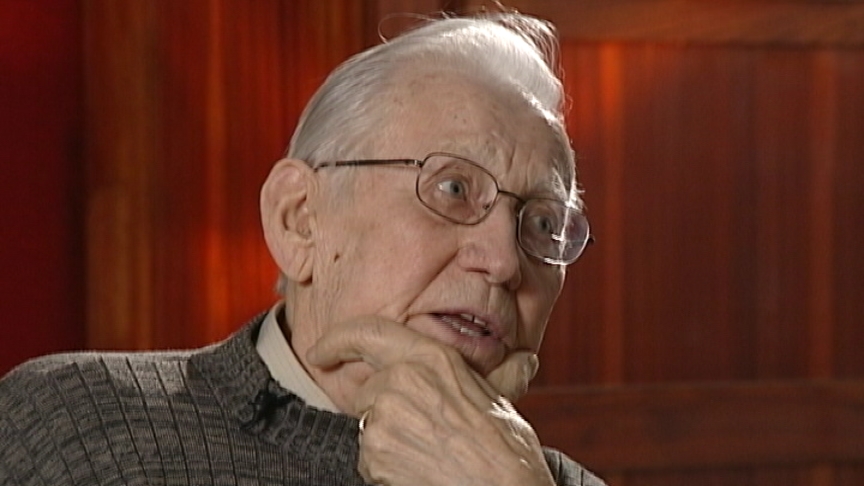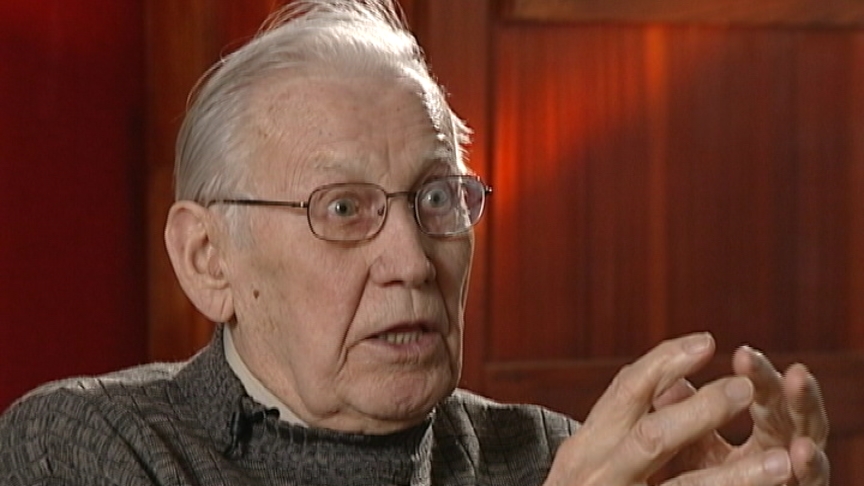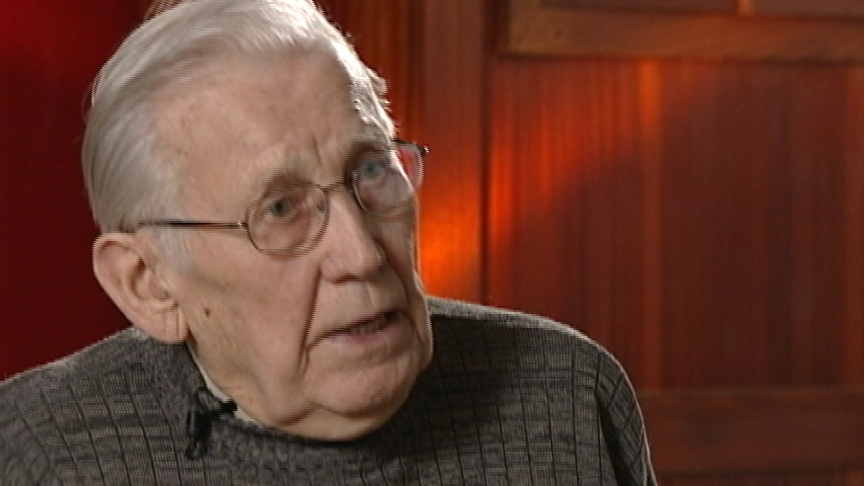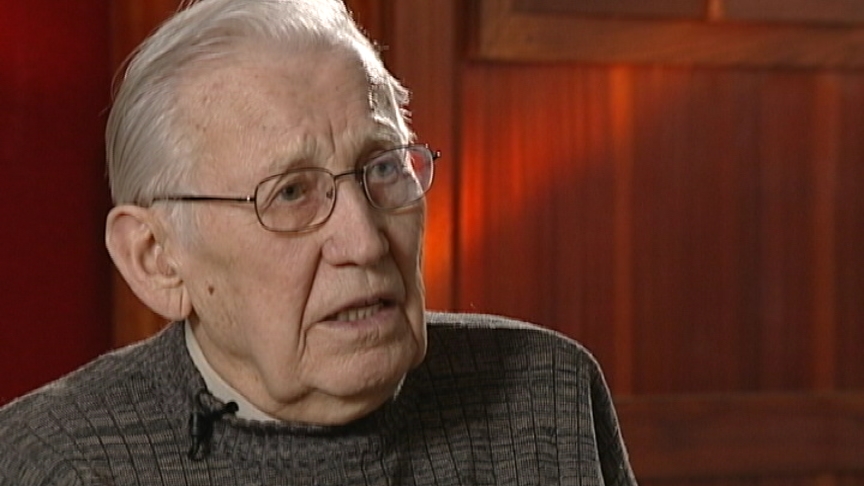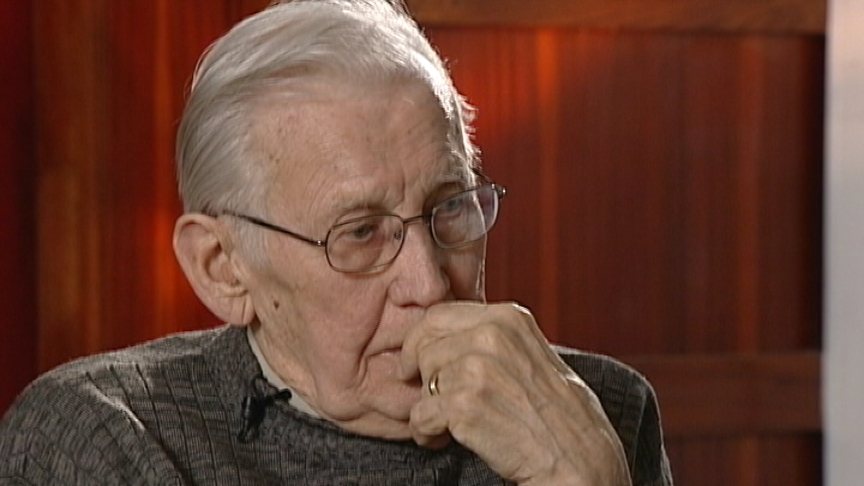“ . . . at the end of 30 days you’re a man.”
Heroes Remember
“ . . . at the end of 30 days you’re a man.”
Basic training is, is, is rough. Actually we, the basic training
that we had was in Edmonton, at No. 1 Manning Depot.
And we had a corporal there, his name was Koszyk. And what they
do is, you become a non-entity. They just drill you into, right
into the ground and, and they take a person, and they turn that
person into a nothing and then begin to mould him. And then at
the end of training, you're a soldier. You can take an order, you
can give an order and, but during that 30 day period all you do
is run. You're running all the time. You're doing things on the
double. Your shoes have to be shined, your buttons have to be
shined, you have to be there early in the morning, you have
to be. The calisthenics, calistetics, for example, aren't part
of the curriculum, the RCF curriculum, but you have to be there.
Half an hour, you have to take exercises. And then you rush
in for breakfast, and it's not served, you help yourself to
breakfast, go to the table, and then you have to be in a certain
place at a certain time. So it's, it's motion all the time, all
the time, all the time for 30 days. But the end of the 30 days,
you're a man. Initial Training School was a kind of a, you're in
a university-type atmosphere where you learned all the mechanics
of the trade that you're going into. You don't know what you're
going into until the end of ITS. And at the end of ITS, depending
on aptitude and how you stand in the class and so on, they
determine whether you're a bomb aimer, at that time it was
only observers. It was, you were either an observer or a pilot.
One or the other. And the Link trainer was a big, big thing in
determining whether you were a pilot or a, one of the other
trades. And the reason for that was because it was based on
aptitude. A Link trainer, if you were, if you qualified as a, a
pilot, then you had to be very, very good on a Link trainer.
It's just a small aircraft, you get inside, it's all closed up,
and it’s got all the instruments of an aircraft in it, and you
fly it. You fly the airplane, you've got the altimeter, and
you know how high you are, how low you are, you're banking,
you're turning. So you go through all those manoeuvres on a
daily basis and if you are, if you have a hell of a lot of
dexterity, you're good at it, you're apt to be a pilot. Everybody
wanted to be a pilot. Everybody wanted to be a pilot. I wanted
to be a pilot badly, but I wasn't. I was an observer.
We decided at the end of ITS, Initial Training School, that I'd
be a bomb aimer, that I'd be an observer, but eventually a
bomb aimer. So, then we went to Dafoe, Saskatchewan,
where we trained for bombing and gunnery. And everyday we went
up in the middle of winter, we went up, and Lysander aircraft
towed the drogues. And we got into an airplane to, usually
Blenheims, Blenheims and Bolingbroke, and we used to fire at
the drogue. So we went into that training, and we also went into
bomb aiming to see whether there was a target on the ground and
we'd try to, to hit that target all the time. So we, we had, we
finished at Dafoe, well, that was six weeks, I guess, and then we
went to navigation school in Rivers. And we were another six
weeks in Rivers, doing navigations, all types of navigation. And
at the end of that period, it was graduation. We went home for a
period of time and then came back out to graduated.
Related Videos
- Date modified:



